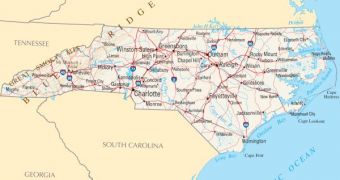According to a new study conducted by experts at the Pennsylvania State University (Penn State), the state of North Carolina is at the highest risk of suffering damage from the rising sea level it has ever been over the past 500 years. The international team of environmental scientists that conducted the investigation said that the situation was most severe in this state, but added that sea rise was accelerating at other locations as well, e! Science News reports.
The paper accompanying the new study appears in the latest issue of the respected scientific journal Geology. The experts reveal that the 20th-century sea-level rise was highest between 1879 and 1915, a period of time heavily influenced by human activities and pollution. The RSLR (relative sea-level rise) between 1900 and 2000 was of about 3 to 3.3 millimeters per year, which is more than three times higher than the average rate, of just one millimeter annually. This conclusion was hinted at in previous studies, but the new investigation provides additional evidence that the other researches were correct.
“Tide gauge records are largely inadequate for accurately recognizing the onset of any acceleration of relative sea-level rise occurring before the 18th century, mainly because too few records exist as a comparison. Accurate estimates of sea-level rise in the pre-satellite era are needed to provide an appropriate context for 21st-century projections and to validate geophysical and climate models,” the lead author of the new paper, Penn State expert Andre Kemp, explains.
The team used advanced measurement equipment, such as radiometric isotopes and stratigraphic age markers, in two salt marshes in North Carolina. These landscape features offer the best possible estimates of sea-level rise, as they are extremely sensitive to it. The RSLR at the Sand Point and Tump Point salt marshes was analyzed for a period of time stretching as far back as 1500. The conclusion was unavoidable – sea levels are increasing faster now than they have over the last half of the millennium.

 14 DAY TRIAL //
14 DAY TRIAL //